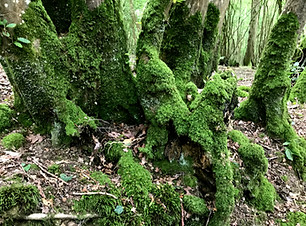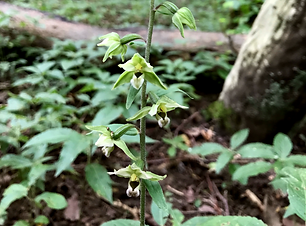
Marline Valley Nature Reserve
A biologically rich remnant of the ancient High Weald landscape with flower rich lowland meadows, ancient gill woodland and bryophyte (mosses & liverworts) rich exposed sandstone along the steep sided gill streams. The nature reserve sits within the Marline Valley Woods Site of Special Scientific Interest.
Over 97% of flower-rich meadows have been lost in the UK. The biodiverse meadows of Marline Valley are a remnant of this lost natural heritage. The meadows are rich in wildflowers and meadow butterflies such as Pyrgus malvae (grizzled skipper).

Melitta tricincta (red bartsia bee)
A nationally scarce ground nesting solitary bee which specialises in foraging on Odontites vernus (red bartsia). The bee emerges in late summer/early autumn when the parasitic plant flowers.

Ancient Gill Woodland
The steep-sided gill streams and woodland of Hastings are a distinctive feature of the geomorphology and ecology of the town. The are rich in fragile bryophyte communities and support invertebrates not found elsewhere in south-east England.

Omocestus rufipes (woodland grasshopper)
This nationally scarce grasshopper occurs in meadows, heathlands and open forest in southern England. The males are a striking black with red tipped abdomens. Both sexes have a distintive pale stripe below the 'knee' on the hind legs.

Bryophyte rich exposed sandstone
Along the gill stream running through Marline Valley sandstone exposures have been cut by milennia of water erosion. These permanently wet rocks are ideal substrate for mosses, liverworts and ferns and associated insect species such as Liancalus virens (waterfall fly).

Epipactis purpurata (violet helleborine)
This nationally scarce orchid is mainly restricted to densely shaded woodland on clay in south-east and central England. This species is doing well in the shaded gill woodlands within Marline Valley but is easily overlooked.
Marline Valley Nature Reserve is owned by Hastings Borough Council and managed by Sussex Wildlife Trust. For more information click here: https://sussexwildlifetrust.org.uk/visit/marline-valley
